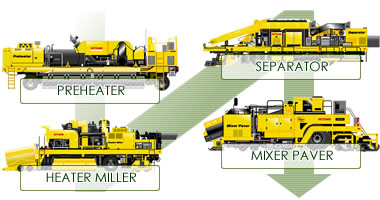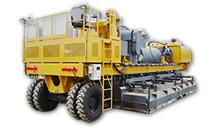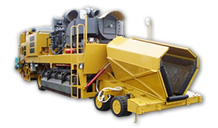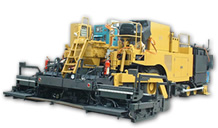With HITONE®, the construction work is divided into four processes, namely; pre-heating, milling, separating and paving. Self propelled machines having specific functions drive on the road and realize their own function.


Loaded with the 6m long surface heating system (1.4 million kcal), the Preheater is able to blast hot air at very high velocity. By heating and gradually softening road surfaces, it is able to execute operations smoothly in collaboration with Heater Miller, Separator and Mixer Paver. The surface heating system is able to recover and to recirculate the hot air initially blasted out and without escaping to the outside so that it increases energy efficiency on road surface and save fuel costs. Typically, two pre-heaters are employed.

Loaded with heater and grinders (road cutters), the machinery is able to mill the softened road surface without breaking aggregates. By further heating and softening the preheated road surface, it is able to mill to the depth of the road predetermined by the construction design.

Loaded with the screening system, which is crucial in making the HIT construction method workable. The Separator receives milled asphalt using conveyors. This asphalt is classified through the screening system into recycled material for the upper layer and for the lower layer. The volume of the classified recycled material for the upper layer is not sufficient to fill the whole upper layer requirement so that additional new materials must be added after grading adjustment. The new and old asphalt mixture are mixed in the pug-mill for the upper layer located at the rear of the Separator and are discharged to the Mixer Paver by a conveyor.
The recycled material classified for the lower layer is dropped down on the milled road surface without any processing and is collected by the Mixer Paver.

The Mixer Paver is equipped with the pugmill which is used only for the lower layer and with the tandem screeds which are able to pave two layers, one on top of the other at the same time with the recycled material for the upper layer and for the lower layer. The recycled material for the lower layer recovered from the road surface is mixed with added additives in the pugmill used only for the lower layer and is paved by the screed for the lower layer. The recycled material for the upper layer is paved by the other screed used only for the upper layer.









